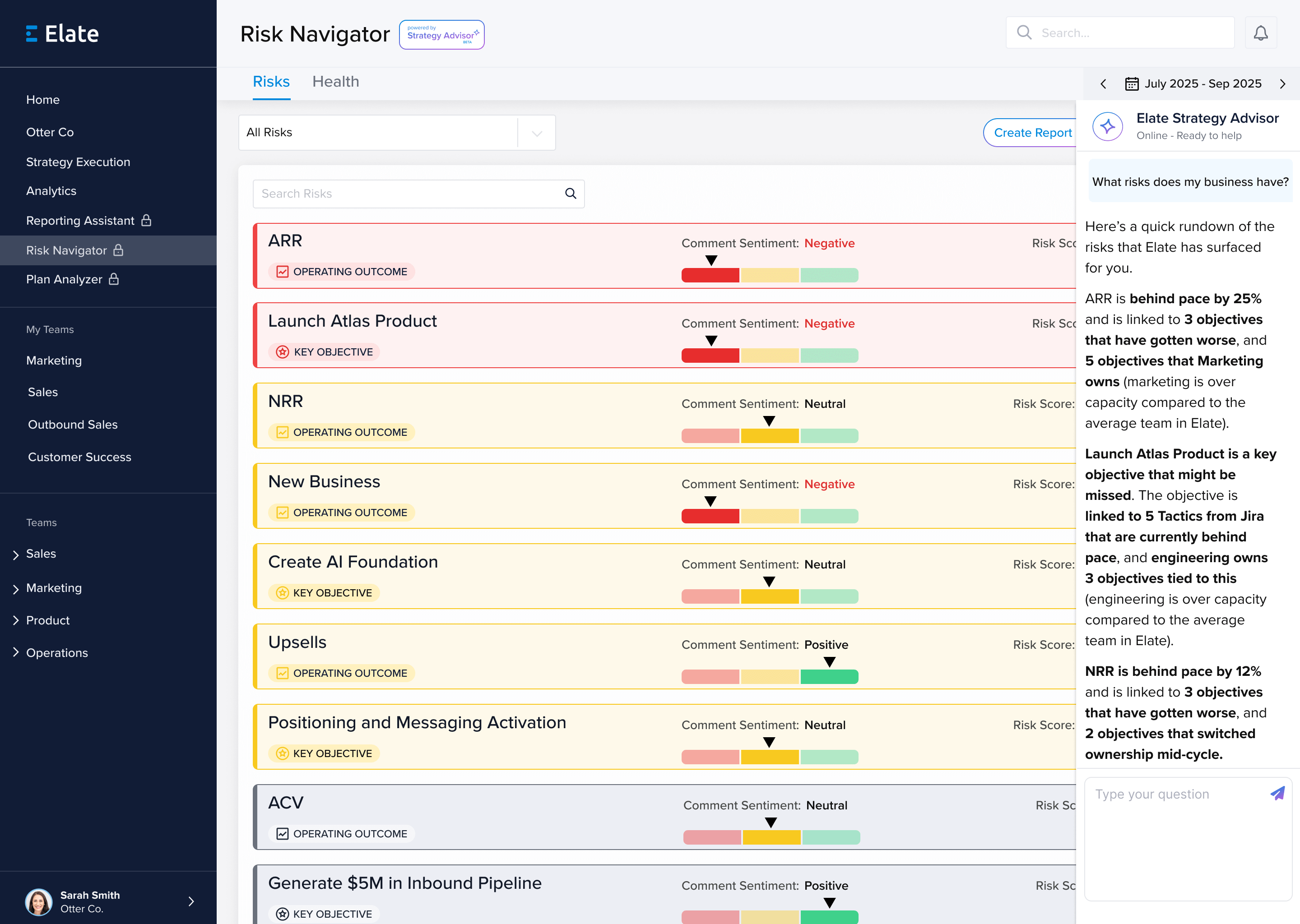Organizations need strategic planning to succeed. This is the process of taking a goal or ideal outcome and turning it into a sequence of objectives that can be followed. A clear, effective strategic plan can help with employee satisfaction and direction. It can drive a company to greater success by lasering in on the things that matter most, and provide new tools and ideas for moving forward as the organization continues to grow.
Whether the organization is a Fortune 500 company or a small startup, strategic software is an invaluable tool that helps with strategic planning and execution. There are countless software solutions available, and it’s important that companies identify the best strategic planning software without having to browse for hours and hours.
The way to find the best solution for your business is to understand the specific functions and factors that drive strategic software. An overview of strategic planning theory shows what the software is trying to do and how conclusions are derived. Understanding how different solutions highlight strategic initiatives is just one example of how strategic planning software can impact your business. In reviewing common strategic planning tools, it’s important to understand the different theory behind strategic planning, the structure, and how the functionality of different platforms assists your business. A few software strategy examples provide concrete evidence of the impact of software and how it was specifically used for success.
By taking this short journey, you can deepen your perspective of strategic planning and the software that is often used to pursue it.
Strategic Planning Theory
Strategic planning theory is the basis on which strategic planning systems are built. You can search the term of strategic planning tools and techniques pdf to get an idea, but there are a handful of theories that tend to dominate this space. In addition to the more modern OKR or V2MOM frameworks, there are six leading theories that are commonly utilized in strategic planning solutions:
- Herzberg’s Two-Factor Theory.
- Maslow’s Hierarchy Theory
- McClelland’s Need Theory
- Expectancy Theory
- Resource Based Theory
- Porter Five Forces Model
Herzberg’s theory classifies company factors as either hygiene or satisfaction. These categories are designed to look at employee retention and determine how company policies and practices affect employee outlook by categorizing them in these two ways.
Maslow’s theory centers on employee esteem and motivation. It builds on the idea that employees thrive when they see that they have good opportunities before them.
McClelland’s theory, as the name suggests, looks at need. Satisfaction and dissatisfaction both stem from certain needs, and understanding those needs can help with motivation.
Expectancy theory aims to understand why people make the choices that they make. It breaks down strategic planning into concepts of rewards and expectations.
Resource theory looks at a company in terms of its prosperity. This can include assets, competitive advantages and control over the industry.
The Porter five forces model breaks strategic planning into components by identifying the five forces that exist in every industry. Competition, barrier of entry, supplier power, customer power and alternative options are all key forces that a business needs to understand in order to stay on top of their industry.
Plenty of other theories and models exist. Ultimately, strategic planning theory drives software and tools designed to aid an organization with its planning.
How to Track Strategic Initiatives
At the heart of executing a strategic initiative is tracking. Tracking tools allow the organization to see progress as it develops and correct for execution problems that arise along the way. Among the many ways to go about tracking initiatives, one of the most widely used tools is a plan template.
In essence, the template organizes information and ideas and lays them out in a format that is easy to follow and update. They can be as simple as a one-page strategic plan template or dynamic enough that they require specialized strategy execution software. One of the easiest ways to become familiar with the idea is to browse for a free strategic plan template pdf. You will see many options and layouts and get an idea of where different organizations have focused their attention.
In addition to a template, strategy execution software can use monitoring tools and multiple input mechanisms to help track strategic initiatives. These measurements are based on predetermined indicators that track how the organization is moving towards the goals. As an example, a company could have a goal to increase revenue by 10 percent. Obviously, one of the key indicators of progress will be revenue, which will be closely tracked by the software. The software can integrate with accounting to take a close look at all sources of accounts payable and received.
However, with a free strategic plan template Word document this type of real-time updating becomes too difficult. Leveraging a Strategic Planning software to monitor indicators that need to be watched can help any organization take meaningful steps toward meeting its strategic goals. More advanced tools will help your company elevate from just reporting on news to breaking news with how you monitor and track data flowing through your business.
Strategic Planning Tools
Strategic planning tools help cement your overall approach and cascade initiatives throughout your company. Most tools are goal-oriented and help define the goals, track progress and direct the organization along the path to reaching those goals. There are countless tools available, but a few are used more commonly than the rest.
Balanced scorecard software is very popular. The balanced scorecard is a tool that allows you to see the whole strategic plan at a glance. It will have an overview of the main goals and indicators attached to those goals. Each subsection contains more detailed information, and as you “zoom in” on the scorecard, you get more specific ideas, plans and data.
A strategy map is another common tool. This is a baseline tool that aims to focus on high-level goals. Unlike the scorecard, the strategy map does not “zoom in” to the specific, narrow goals nested inside the plan. Instead, it is often used to create the general plan that is later detailed in the scorecard.
Lastly, objectives and key results (OKRs) are favorited by organizations for specifying the detailed parts of the strategic plan. Strategic management software will often use OKRs to help identify the most important parts of the plan and help with followthrough.
Software Strategy Examples
There are countless software options that exist today, claiming to help you execute on your company’s strategic plan. Rather than go through a laundry list and compare pros and cons, it is often better to understand how software has been implemented through real-world examples.
Civic Eagle is an organization that works in government affairs and legislative advocacy. The organization wanted to improve efficiency across the board and made it a key metric for their strategic plan. With their strategy software, they unified communication and transparency, which is to say that they made it easy for members of the organization at every level to see what information was being tracked and why. In order to do that, they needed a way to report on KPIs in a strategic planning app that was easy to use with a simple interface. Simplicity worked, and Civic Eagle was able to implement a solution that is designed to scale with their business.
California Closets provides another example. This is a company that designs custom storage. While the premise is simple, deploying onsite teams can prove challenging, and improving communication and organization was a priority for California Closets. They looked at planning tools in business management and found that software as a service held the answer. The customized software helped to create specific meeting tools that help the business stay focused and on point through meetings, improving overall communication and organization.
Best Strategic Planning Tools
With so many strategy tools available, identifying the best can prove challenging. Going through them one at a time is not feasible, so the best shortcut is to understand how theory translates into tools to help your company scale.
Some of the success we’ve seen at Elate when it comes to deploying well-developed strategic planning is leveraging OKRs or KPIs to help track performance.
It’s important to leverage the best strategic planning tools in a way that allows you to define company themes you are driving towards that are broken into objectives that can be owned by departments or individuals and are measured by true results that aren’t subjective.
Elate is a software platform utilized by software companies to help execute on their goals. From sales and marketing to product managers and developers, Elate is used to track strategic plans across your company.
Something else to consider is current technology. While all software will feel up to date, that isn’t necessarily true. The best tools will be easy to use and integrate with your existing platforms to integrate the data driving your business forward today. They will bridge communication gaps in the organization, and they will have real-time resources that help with the rapid change that is common in virtually every industry these days.
When using a platform like Elate, you can trust that your strategic planning tools will be built on sound principles that offer the latest integrations to empower you and your organization to execute your plan.











